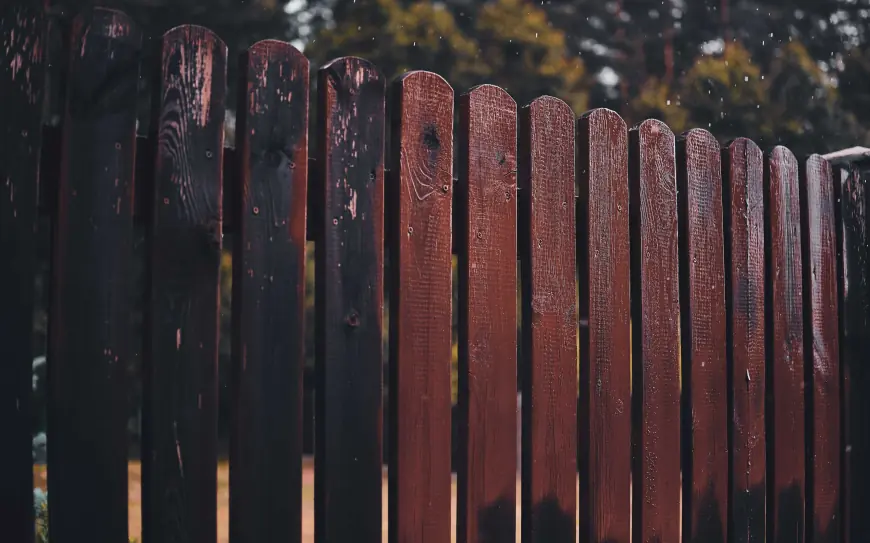The Ultimate Guide to Cedar Fence Installation: Benefits and Expert Tips
Discover the benefits of cedar fence installation, including durability, natural beauty, and low maintenance. This comprehensive guide covers the installation process, expert tips, styles, and maintenance practices to help you create a stylish and long-lasting cedar fence for your property.

Adding a fence to your property is more than just a functional decision—it's an aesthetic and financial investment. Among the many fencing options available, cedar has emerged as a top choice due to its natural beauty, durability, and eco-friendly attributes. If you’re considering cedar fence installation, this comprehensive guide will provide insights into its benefits, the installation process, expert tips, and maintenance practices to ensure you get the most out of your investment.
Why Choose Cedar for Your Fence?
Cedar fences have long been favored by homeowners and businesses for their blend of form and function. Here’s why cedar stands out:
1. Natural Beauty
Cedar wood boasts a rich, natural tone with unique grain patterns, enhancing the visual appeal of any property. Over time, it weathers into a distinguished silvery-gray, adding charm to your outdoor space.
2. Longevity and Durability
Cedar is naturally resistant to rot, decay, and insect damage, making it one of the most durable wood options for fencing. With proper care, cedar fences can last 15–20 years or more, even in challenging climates.
3. Eco-Friendly Material
As a renewable resource, cedar is a sustainable choice for fencing. It requires minimal chemical treatments, reducing its environmental impact compared to synthetic materials.
4. Versatility
Cedar fences are available in various styles, including picket, privacy, and lattice designs. Whether you want a rustic look or a sleek, modern aesthetic, cedar can be customized to suit your preferences.
5. Enhanced Privacy and Security
With its dense composition, cedar provides excellent privacy and sound insulation, making it ideal for creating a tranquil outdoor environment.
The Benefits of Cedar Fence Installation
Cedar fences offer a wide range of advantages, making them a worthwhile investment for property owners:
- Weather Resistance: Cedar withstands moisture and extreme temperatures better than many other wood types, reducing the risk of warping or splitting.
- Low Maintenance: Unlike other woods that require frequent sealing or painting, cedar remains durable with minimal upkeep.
- Cost-Effectiveness: While the initial cost of cedar may be higher, its long lifespan and low maintenance requirements make it a cost-effective choice in the long run.
- Healthier Environment: Cedar’s natural oils act as a deterrent to insects and fungi, reducing the need for chemical pesticides or preservatives.
The Cedar Fence Installation Process
If you’re planning a cedar fence installation, understanding the process can help you make informed decisions and achieve the best results. Here’s a step-by-step breakdown:
Step 1: Planning and Permits
Before installation, assess your property to determine the location, height, and style of your fence. Check local zoning laws and obtain any necessary permits to ensure compliance with regulations.
Step 2: Material Selection
Choose high-quality cedar boards for your fence. Options include:
- Clear Cedar: Smooth, knot-free wood with a polished appearance.
- Knotty Cedar: Features natural knots, providing a rustic and organic look.
Select the style that aligns with your design preferences and functional needs.
Step 3: Site Preparation
Clear the installation area of debris, rocks, or vegetation. Mark the fence line and measure it accurately to ensure proper alignment.
Step 4: Post Installation
Fence posts serve as the foundation of your fence. Dig holes to a depth of at least one-third the post's height and set the posts in concrete to ensure stability. Allow the concrete to cure before proceeding.
Step 5: Installing Rails and Panels
Attach horizontal rails between the posts, then secure the cedar boards or panels to the rails. Whether you prefer vertical, horizontal, or decorative patterns, ensure the boards are evenly spaced and level.
Step 6: Finishing Touches
Apply a protective stain or sealant to enhance the wood's natural beauty and protect it from moisture and UV rays. This step not only preserves the cedar’s appearance but also extends its lifespan.
Expert Tips for Successful Cedar Fence Installation
To maximize the value of your cedar fence, follow these expert tips:
1. Invest in Quality Materials
High-grade cedar wood may cost more upfront but provides better durability, reducing repair and replacement costs over time.
2. Hire Professionals for Installation
While DIY installation may seem cost-effective, hiring experienced contractors ensures precision and saves time. Professionals can also handle challenges like uneven terrain or intricate designs.
3. Allow for Proper Spacing
When installing boards, leave a small gap to accommodate wood expansion and contraction due to weather changes. This prevents warping and ensures a longer lifespan.
4. Use Galvanized Hardware
Choose rust-resistant nails and screws to prevent stains and ensure the structural integrity of your fence.
5. Regular Maintenance
Keep your cedar fence in top condition with periodic cleaning and sealing. Inspect it annually for signs of wear or damage and address issues promptly.
Cedar Fence Styles and Design Ideas
Cedar fences are versatile and can be tailored to suit various aesthetic preferences. Here are some popular styles:
1. Privacy Fences
Perfect for creating a secluded outdoor space, privacy fences feature tightly spaced boards to block visibility.
2. Picket Fences
A classic choice, picket fences add charm and character to gardens and front yards.
3. Horizontal Slat Fences
For a modern, contemporary look, horizontal slat fences offer a sleek design while maintaining functionality.
4. Lattice Top Fences
Add an elegant touch with lattice panels on top of your cedar fence, combining privacy with decorative appeal.
Cedar Fence Maintenance: Keeping It in Prime Condition
While cedar is low-maintenance, regular care ensures it remains strong and visually appealing for years. Here’s how to maintain your cedar fence:
1. Clean Annually
Remove dirt, mold, and mildew with a mild detergent and water. Avoid using harsh chemicals that can damage the wood.
2. Reapply Stain or Sealant
Every 2–3 years, apply a protective sealant or stain to shield the wood from UV rays and moisture. Opt for products specifically designed for cedar.
3. Inspect for Damage
Check for loose boards, cracks, or signs of insect infestation. Address minor issues immediately to prevent larger problems.
4. Trim Nearby Vegetation
Keep plants, bushes, and trees away from the fence to prevent moisture buildup and reduce the risk of rot.
Cost Considerations for Cedar Fence Installation
The cost of cedar fence installation depends on several factors, including:
- Fence Size: Larger fences require more materials and labor.
- Design Complexity: Decorative patterns or intricate styles may increase costs.
- Material Grade: Clear cedar costs more than knotty cedar but offers a polished look.
On average, homeowners can expect to spend $15–$30 per linear foot for cedar fence installation, including labor and materials.
Conclusion
Cedar fences are a timeless and practical choice for enhancing the privacy, security, and visual appeal of your property. With their natural beauty, durability, and eco-friendly benefits, cedar fences are a worthwhile investment for any homeowner or business.
By understanding the installation process, choosing high-quality materials, and following proper maintenance practices, you can enjoy the benefits of your cedar fence for years to come. Whether you’re prioritizing functionality or style, cedar fence installation offers the perfect solution for creating a durable and beautiful outdoor space.
What's Your Reaction?
 Like
0
Like
0
 Dislike
0
Dislike
0
 Love
0
Love
0
 Funny
0
Funny
0
 Angry
0
Angry
0
 Sad
0
Sad
0
 Wow
0
Wow
0










































